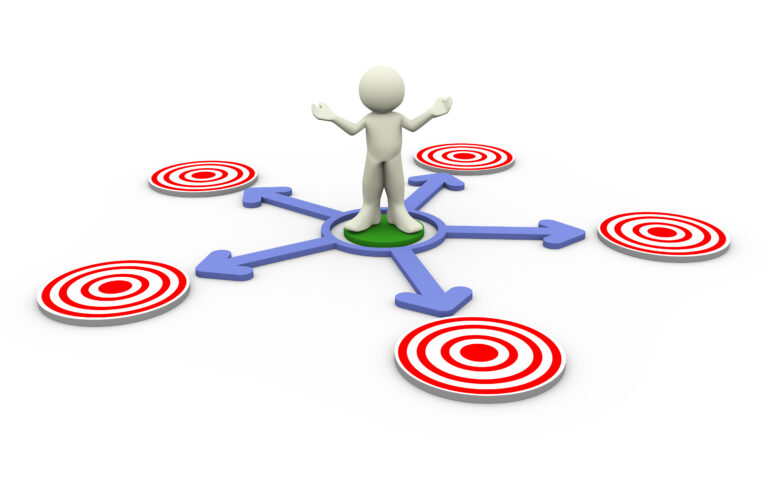8 Evergreen Niches For A Post Pandemic World (Based on Real Data)
The global COVID 19 pandemic has changed how we live, socialize, and conduct business.We have been forced to adopt a new normal. There has been a shift in customer needs. Behaviors have changed in digital marketing, even in evergreen niches. These behaviors have changed the way these sectors have function. Because we as consumers must maintain a certain level of social distance and look for practical and affordable solutions to our everyday purchasing problems, the way we discover brands and make purchases have changed. This presents a chance for digital marketing.Today we will explore 8 evergreen niches for a post pandemic world.
What’s Changed for Affiliate Marketers?
There are always changes in a digital world, but new opportunities have arisen because the world has changed. Local businesses are struggling. Many were finding it tough before, but now some of them are hanging on by the skin of their teeth. Gyms may never recover their previous popularity, which offers huge potential in the fitness industry for digital marketers. Restaurants are flagging as people are cooking and baking at home more. Many people started working remotely during the pandemic. Finally, companies have realized that remote work is possible. Even doctors are now offering Zoom consultations. So let’s dive right into the opportunities in evergreen niches.
What are evergreen niches?
Evergreen, in the botanical world, means trees with leaves all year round. In the digital world, it means an evergreen niche that makes money for most of the year. Some niches are seasonal such as Christmas toys. There is no doubt that Christmas toys make money, but when you divide that by 12, the monthly income is less than you can earn from an ever-growing niche. There are advantages to both seasonal and evergreen niches. My advice is if this is your first niche, choose evergreen. Once an evergreen niche has been established, you can use the profits to fund the seasonal niche.
1. Make Money Online
Clearly, my preferred option for an evergreen niche topic is simply because everyone wants more cash. There are approximately eight billion people on the planet, so let’s suppose there are about three billion children. That still leaves five billion grown-ups. Suppose I ask you, “How many individuals do you know who is sufficiently fortunate not to want more money?” I rest my case!
One reason why it is so well-liked is that it offers both virtual and physical goods to the market, along with membership sites. An excellent example of this is My Money Mentor, which is accessible on ClickBank. Clickbank is one of the oldest affiliate marketing networks around, and it is interesting for newbies in that they give an automatic link with manual approval.
It is a competitive niche, but that in itself offers several advantages. There are people in the niche at every level. That means even as a newbie. You can talk about your journey. Wealthy Affiliate offers superb training in the internet marketers niche. There is training for beginners and advanced marketers. The money is passive income. Once someone has joined, you get commissions every month. At least thirty percent of my referrals to Wealthy Affilite’s go annual so there retention rates are excellent. The average time people become members is five months. If you want to try it, you can create a free account here (affiliate link)there is nothing to pay for, and you don’t have to give your credit card details. All you have to do is to create a free account.
There is one caveat this niche is competitive, and if you go down the creating a website route, it will take a lot of content before you make money. If you have a SOCIAL MEDIA PRESENCE, you can make money immediately.
1. There is one caveat this niche MAKE MONEY ONLINE is competitive, and if you go down the creating a website route, it will take a lot of content before you make money. If you have a SOCIAL MEDIA PRESENCE, you can make money immediately.
2. Although it has the biggest competition in any niche, it also has the largest amount of solutions.
3. This niche has digital and physical products and recurring income. This gives a massive range of products, from pennies to several thousand dollars. Some of the high ticket offers allow you to make over a thousand dollars PER SALE.
4. The best guide about recurring income on Clickbank is Rebill Riches (Affiliate link)
2. The fitness Niche
There has been a proliferation of fitness videos and online fitness sites since covid. There has been an exponential increase in home gyms. The days of people going out to the gym may never fully recover. There is enormous potential to exploit this trend by recommending home gym products. There are small items like kettlebells and big items like cross trainers. Not everyone has space for a full gym which is why small items like kettlebells and skipping ropes are popular. Fitness videos in areas like Pilates would be a great addition to promote.
Mental health has exploded into the mainstream. The significant shift has been the change in society’s attitudes, partly because of an increased number of people experiencing mental health issues during the pandemic. This shift has changed the way society looks at and judges mental health. People are becoming more accepting of mental health problems and more supportive of people with issues. They are more aware of common mental disorders such as depression and anxiety and are more willing to talk to health professionals and seek treatment. There is also potential in promoting natural sleep cures, which can be cross-pollinated with sleep apps.
“The true definition of mental illness is when the majority of your time is spent in the past or future, but rarely living in the realism of NOW.”
Shannon L. Alder, n.d.
3. Anti Aging
The global pandemic has significantly shifted consumer perspectives and behaviors around health, disease prevention, and proactive wellness. As a result, the anti-aging market has adapted in some meaningful ways. There is now greater attention on boosting immunity and resilience in aging populations who faced higher mortality rates from the coronavirus. Supplements, nutritional advice, and lifestyle changes that specifically help older adults maintain optimal immune function are more integrated into anti-aging content and product offerings.
Attitudes around biological aging have also changed to some degree. After COVID-19 emphasized the risks of advanced age so prominently, more consumers became motivated to protect against age-related decline earlier. They want to preemptively safeguard health long before reaching elder stages. This has widened the target demographic for anti-aging beyond just seniors to now encompass Gen X and younger Millennials as well.
Additionally, restrictions and risks of venturing out during lockdowns shifted consumer demand toward more in-home and DIY anti-aging alternatives. Specialized gadgets, devices, floating tanks, oils and personalized skin/haircare exploded as safer options. Merchants innovated through ecommerce, digital content and subscriptions to retain wary yet engaged consumers through intimate online branding.
Finally, attention expanded beyond just physical aging to now equally prioritize mental/cognitive health as well. Managing pandemic-fueled emotions like anxiety, isolation and depression heightened interest in brain exercises, neural wellness, meditative habits and nootropics that help preserve cognitive abilities and resilience in later years. The niche now takes a more holistic view of aging.
The Baby Boomer is getting older, even younger ones have started an antiaging lifestyle. Vanity still drives people to spend big on things that make them feel better. It includes anti-wrinkle creams, more exercise, mental health, staying mobile, and so on. A good mix between virtual and physical goods.
4. parenting
If you have the opportunity to capture the time parents-to-be are trying to get pregnant, then cater for their every need during their child’s infancy, through to pre-school, kindergarten, primary school, middle school, high school and college, you\’ve got yourself a money-making machine! Topics like sleeping, nutrition, discipline, toys and games, education and play are all profitable.
The massive shift to remote schooling and work brought on by the pandemic significantly altered many facets of parenting. With kids at home full-time, parents took on amplified roles balancing childcare, education, and their careers simultaneously. Content creators and brands adjusted approaches to provide more tactical advice, educational resources, mental health support and parenting products for an entirely new stay-at-home lifestyle.
In particular, there was a spike in demand for content around managing pandemic-era challenges like homeschooling curriculum, virtual learning best practices, nurturing children’s development without traditional school, maintaining family bonds during quarantine, and coping with added stress, anxiety and fatigue from round-the-clock parenting duties. Niche merchants responded through detailed blogs, instructional videos, customized curriculum kids can access digitally, and new lines of toys and games conducive to indoor play.
Additionally, with screen time and device usage soaring among confined children, digital wellness and online safety concerns came to the forefront as major issues for parents to navigate. Parenting sources published more guidance around setting screen time rules, enforcing safe browsing habits, using parental controls, fostering healthy digital hygiene, and detecting signs of cyberbullying which escalated. Cybersecurity groups partnered with parenting platforms to help protect vulnerable at-home kids.
While pandemic conditions have eased somewhat, the barrage of parenting challenges it surfaced led to lasting changes – both in terms of greater modern resources now available as well as shifts in mindsets, values and parent-child relationships dynamics. The niche continues to evolve post-pandemic but conscious parenting has entered the realms of evergreen niches.
Conscious parenting is an example of this evolution it is founded on principles of intentionality, presence and connection rather than just reactive responses. The priorities are self-awareness, teaching emotional intelligence, respecting autonomy, peaceful communication and nurturing creativity within safe boundaries. Conscious parents bring mindful presence to interactions with children rather than getting hijacked by their own stress triggers or distractions.
By cultivating emotional bonds and responding empathetically to a child’s needs, conscious parenting fosters secure attachment. Tantrums or misbehaviors are viewed as opportunities to validate feelings, set compassionate limits and help kids gain skills in self-regulation. Conscious parents discipline by explaining issues respectfully and avoiding punishment, shame or manipulation tactics.
Rather than dictate expectations, conscious parenting respects the child’s own voice, interests, passions and independence within reasonable safety limits – saying “yes” more often to self-expression through imagination, play and creative activities kids initiate. Fostering individuality takes precedence over imposition of a parent’s own desires or conditioning strict obedience.
The ultimate goal in conscious parenting is to nurture the whole child across physical, emotional, intellectual and social needs with empathy and connection guiding all interactions. It aims to teach kids to understand themselves, think critically, articulate emotions and act conscientiously.
5: Cooking
We all eat, so it’s a relevant topic. Food niches are huge right now. Many people became gourmet cooks and bakers during the pandemic. In the Great British baker final in 2022 there was a baker who had only started baking six months before. He hands down beat people who had been baking for twenty plus years. Promote cooking with different skill levels, like quick, easy, comfort, etc. Also, include recipes for specific diets, such as gluten-free, keto, vegetarian, and more. There are lots of visual aspects to this, so you can also post pictures on Pinterest and Instagram. You can also create a blog.
The digital age has brought about significant changes in the depth, style and functionality of online cooking content. Food blogs today tend to integrate engaging visual components through photography and videos optimized for platforms like Instagram and TikTok. Recipe posts balance beautiful artistic presentation with easy-to-follow video tutorials on cooking techniques through short-form vertical video. This shift speaks to information-overloaded readers who gravitate toward more visual and convenient content.
Similarly, in recipes themselves, convenience is now king. Recipes emphasize shortcuts, “5-ingredient” simplicity, pantry staple dishes and overall hacks to make cooking faster and more accessible for busy home cooks who still want delicious results. Given many people’s economic constraints as well, cooking blogs also spotlight efficiency in cost-cutting and affordable, budget-conscious ingredients for the everyday chef.
Additionally, dietary restrictions now play a huge role in the food blogger’s repertoire. Catering to specialty diets like vegan, Paleo, keto, gluten-free, dairy-free, etc. usually figures prominently. Fewer blogs use a blanket “one-size-fits-all” approach anymore with so many readers having specific nutritional needs. Bloggers get creative in suggesting substitutions.
Finally, cooking blogs adopt a more down-to-earth, conversational voice and tone to help readers feel like they’re alongside a real person in the kitchen rather than being formally trained. The content aims for a casual friendliness in walking novices through the cooking process from grocery lists to garnishing. Expert advice melds with emotional support.
6. Relationships
Start by finding someone to date, then to wedding preparations, there are bad days, like getting back with an ex – everyone wishes to get loved. Therefore, many men and women spend money and time to study how to find love and how to make oneself better, even how to get over their difficulties. On Amazon, the “Five Love Languages” book is all the time in the best seller ranking. The relationship niche was also an example of an evergreen niche having to find new purpose.
The isolation and extended time together inside homes during quarantine posed novel challenges for many relationships. Issues that may have been easier to overlook like disparate housework roles, communication gaps, intimacy blocks, conflicting priorities suddenly intensified. This put strain on partnerships and led to a spike in breakups, separation and divorce. As a result the relationship space saw greater need for tactical advice on strengthening bonds in close quarters and navigating conflict.
Content creators and coaches adapted through online courses, virtual retreats, couples counselling via videochat and targeted blog posts with science-based tips on managing dynamics like balancing childcare duties, keeping romance alive without date nights availabile, identifying signs of codependency, and productively airing pandemic stress. Goods like conversation card decks, intimacy games and relationship journals also catered to modern confinement needs.
However, quarantine also fostered positive shifts for some relationships that had more focused quality time to share goals, get vulnerable about the future, improve sexual issues through exploration and better understand a partner’s unmet needs. This revealed an appetite for guidance on leveraging adversity to fortify bonds rather than have hardship breed resentment. Deeper connection activities like sensate focus for intimacy skills entered the mainstream.
Emerging from COVID-times, the relationship space still shows immense appetite for actionable techniques across communication, sexual fulfillment, household fairness, crisis management, strengthening friendship and respect foundations, and thriving within diverse relationship configurations beyond monogamy. The niche continues to see evolution and opportunity.
7. travel
The travel industry experienced immense upheaval and restrictions during peak pandemic times, with global tourism effectively halted for a period. Travel had always been an evergreen niche, but suddenly the opportunity to travel became to a virtual standstill. This caused travel bloggers and magazines to shift focus toward more escapist, armchair entertainment – spotlighting culture, stories, history and virtual tours about dream destinations their grounded audiences longed to visit someday. Monetization relied more on affiliate marketing for future bookings.
As consumer comfort with travel became more solid, the niche increasingly spotlighted more isolation-oriented getaways focused on private vacation rentals over hotels, proximity road-trip options nearby rather than planes, open nature experiences like national parks instead of crowded cities, and tailored small group tours aligned to specific interests like wildlife or wine. Content also embraced travel precautions around optimized ventilation, contactless amenities, stringent sanitization practices and health safety protocols when choosing accommodations. The travel industry is a prefect example of an evergreen niche having to reinvent itself.
While pandemic hindered travel expanded interest in investing in RVs, camper vans and other mobile homes adapted for remote work and portable temporary living. This allowed for trip flexibility. The glamorized #VanLife concept permeated social media and aligned perfectly with emerging remote work trends. These became lucrative avenues for travel bloggers to spotlight through affiliated recommendation content.
With tourism returning in full swing, ample opportunities remain for travel advisers to continue providing helpful guidance, gear recommendations, and spotlighting more isolation-oriented destinations and tour providers catering to post-COVID preferences. However focus also returns to classic global sights now accessible to masses again. Niche brands help wary consumers re-engage thoughtfully with optimal precautions.
The pandemic-era adversity ended up expanding interest in travel varieties once deemed non-mainstream. This diversification benefits niche experts that can match unique travelers with specialized tour style guidance.
8. Survival or Prepping niche
As panic buying and supply chain turmoil for essentials like toilet paper, medicine and canned goods dominated early stages of lockdowns, public consciousness around disaster preparation spiked. “Preppers” were suddenly viewed more mainstream rather than fringe as their warnings around stocking emergency supplies proved prescient. The survival niche wasn’t always an evergreen niche, it was considered to be the domain of nutters, and scaremongers. Covid changed all that and catapulted the prepping niche into a mainstream evergreen niche.
This led to huge interest and demand for guidance around emergency pantries, off-grid power options, sustainable food sources, medical kits, defensive gear and other resilience fundamentals. As economic instability also followed, more average households got invested in prepping as insurance even outside ”end times” style breakdowns. Living off grid particularly became an evergreen niche with a plethora of books and courses teaching people how to do it.
In light of global instability and virus mutations, new innovations also came to market around highly-protective masks and wearables, portable isolation shelters if quarantining at home isn’t possible, body temperature detection tools, UV-sanitizing gear to disinfect personal objects out in the field and more.
While interest remains elevated, some fatigue also set in around overly alarmist scenario predictions that fail to materialize immediately. This revealed a need for more balanced prepper guidance focused on practical readiness, mental resilience and staying vigilant yet grounded when consuming media narratives around emerging virus strains, conflicts, grid weaknesses and the like.
There are still underserved niches around prepping advice tailored to those living in dense urban apartments with extremely limited space, or groups like people of color, LGBTQ members and women who feel most existing prepper advice ignores their unique social challenges in disaster scenarios involving civil unrest or discrimination. Content gaps around these areas present solid opportunities.
Even evergreen niches change. In this case these eight examples of evergreen niches has opened up new potential for you as a blogger in these evergreen niches. While COVID-19 brought immense hardship for many established industries and niches like travel, parenting, relationships, prepping and more, the adversity also uncovered previously overlooked priorities, exposed underserved audiences, accelerated niche innovations and diversified content directions. Within the upheaval, promising lanes emerged around portable minimalist living, isolation-oriented tours for the wary, telehealth’s evolution, budget-saving parenting hacks, fostering connection in confinement, and disaster prep guidance that balances practicality with compassion.
As society continues processing this historic pandemic period, the lasting evergreen niches shifts reveal openings for digital merchants and blogs to rethink products, modernize offerings and better align with post-pandemic consumer values, preferences and pain points. There is bountiful blue ocean ahead for those paying attention to modernization opportunities in evergreen niches. Rather than return to former status quos, the winning approach may be building upon these revitalized market verticals.










Thank you Carol for your kind comments. I hope you have bookmarked http://www.milliondollarattachecase.com for future reference.